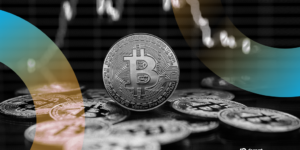The Public internet is a bottleneck for blockchain — DoubleZero CEO

Public internet infrastructure is the critical speed and performance constraint on high-throughput blockchain networks, according to Austin Federa, co-founder and CEO of DoubleZero, a project developing high-speed fiber optic communication rails for blockchains.
“The downside of the public internet is it was never built for high-performance systems. It was always built for this sort of relationship of one big server talking to one little server,” Federa told Cointelegraph in an interview at Consensus 2025. The executive explained:
“We have validators all around the world. Rotating leader schedules all the time. And then they switch from having to be massive consumers of data to extremely massive broadcasters of data. So that means that they need huge amounts of resources both on ingress and egress.”
The executive added that the constraint posed by public internet infrastructure is now the limiting factor in blockchain performance and not compute power or software development.
Networks like DoubleZero will make blockchains faster, decrease spreads in decentralized finance (DeFi) trades, lower transaction fees, and open up new use cases for blockchain networks that were previously unavailable due to communication infrastructure constraints.
Related: Blockchains ready for institutions, lawyers hesitate: DoubleZero CEO
DoubleZero co-founded by Austin Federa in 2024
Austin Federa left the Solana Foundation to establish the DoubleZero Protocol in December 2024. The goal of the project is to reduce latency, the time it takes for data to travel in a network, and bandwidth — the maximum data traffic a network can handle at once.
In April 2025, DoubleZero conducted a validator token sale to sell token purchase agreements to interested node operators seeking to become validators for the network.
The token sale was only available to accredited investors and already active validators on high-throughput blockchain networks including, Solana, Celestia, Sui, Aptos, and Avalanche.
DoubleZero’s team is aiming to launch its public mainnet in the second half of 2025, following a successful $28 million capital raise.
Federa told Cointelegraph that the increasingly high throughput of blockchain networks and the overall development of the industry has necessitated the building of dedicated, high-performance communication infrastructure to meet demand from increasingly sophisticated projects.
Magazine: What are native rollups? Full guide to Ethereum’s latest innovation












